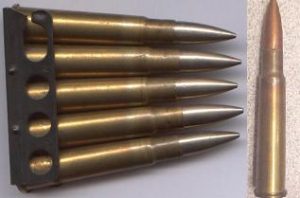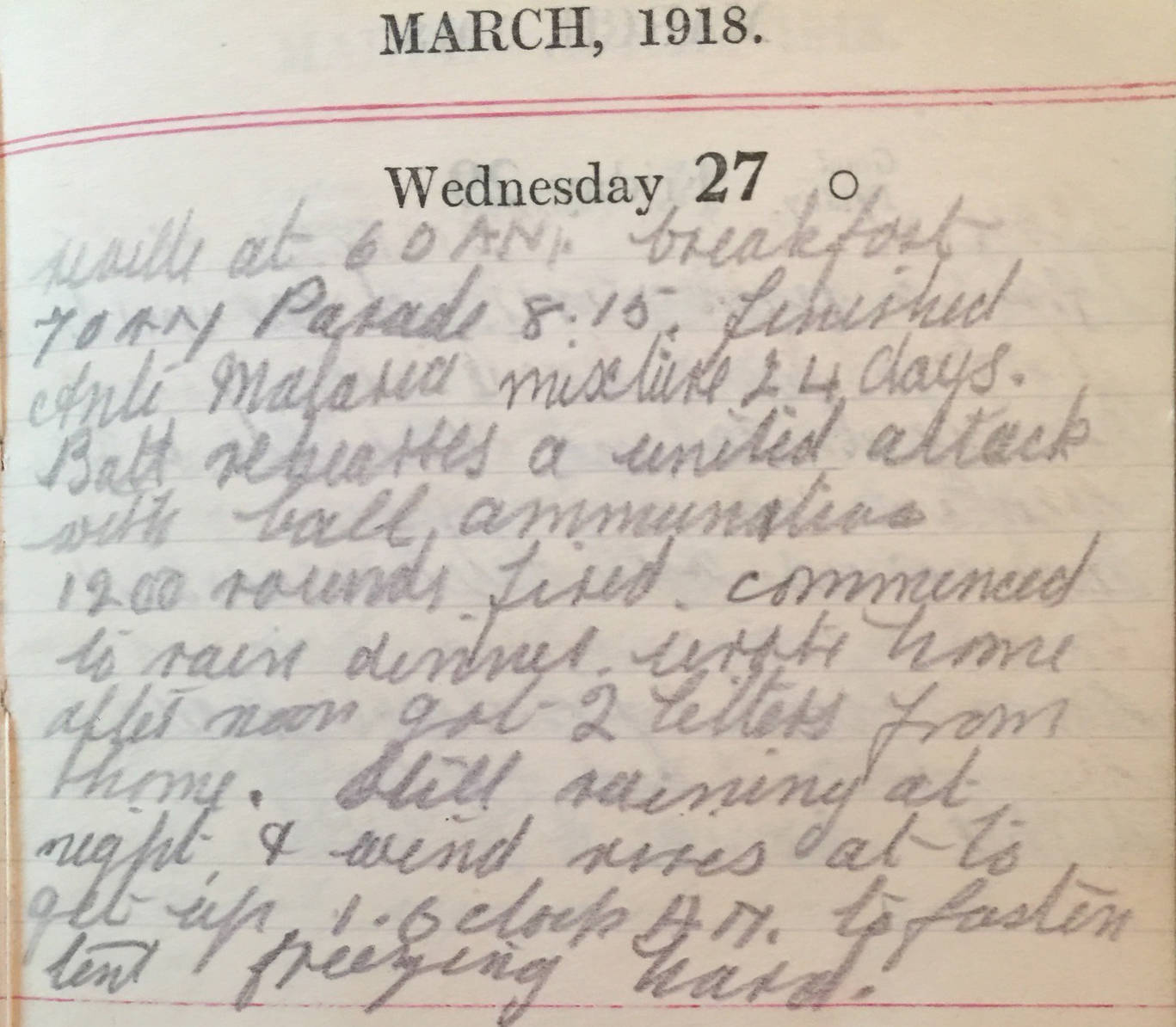Wednesday March 27th, 1918
Reveille at 6am, breakfast 7am, Parade 8:15. Finished anti-malaria mixture 24 days. Battalion rehearses a united attack with ball ammunitions – 1200 rounds fired. Commenced to rain dinner. Wrote home afternoon. Got two letters from home. Still raining at night and wind rises. Had to get up 1am to fasten tent. Freezing hard.
Training Completed
Today the military and sports training comes to an end. The Battalion’s diary records the outcome of the two competitions. B Company is just pipped at the post in the Military events and comes third in the Sporting league table. D Company are clearly the stars of the Brigade and A Company the laggards.
Interestingly the culmination of training is a Field Firing attack with 1,200 live rounds of ammunition fired. Hopefully incident-free!
.303 bullets
Apparently ‘ball’ ammunition is the military term for ‘full metal jacket’ bullets. These or similar had been mandated by both The Hague Convention of 1899 and the earlier Declaration of St Petersburg in 1868 – which banned bullets that either easily flattened or expanded in the body. Invented in 1880, full metal jackets meet this specification by having a soft core and a hard casing. They also feed more easily through a gun as they do not distort as easily as bullets with soft shells.¹

The standard bullet of the British Army from 1889 until the 1950s was the .303 cartridge and was used in most small arms of WWI including SMLE rifles and Lewis Guns. The British used the Mark VII version of the .303 from 1910 onwards. Over seven billion of these bullets were manufactured in Britain alone during WWI, almost a third of them at the Kynoch munitions factory in Birmingham.².
While it appears to be a conventional full metal jacket bullet, the top third of the Mark VII was packed with aluminium, plastic or wood pulp and the back with lead. While it was autoclaved to prevent wound infection, the weight differential between the front and back of the bullet meant that once it hit the target, it pitched and deformed thereby inflicting more severe gunshot wounds than a single-core design. Despite this, because of its full metal jacket covering, it complied with the terms of The Hague Convention.³
13th (Service) Battalion War Diary – 27th March 1918 – No 1 Sector, Olasli
Training. The Battalion is in attack (Field Firing). 1 OR struck off effective strength under GRO 1011 with effect from 24-3-18, 4 OR from 25-3-18, 1 OR from 26-3-18 and 3 OR from 27-3-18. Results of Recreational Training Competition –
Military Events: 1st – D Coy with 35 points, 2nd – B Coy with 31.5 points, 3rd A Coy with 14 points, 4th C Coy with 11.5 points
Sporting Events: 1st D Coy with 70 points, 2nd C Coy with 57 points, 3rd B Coy with 43 points, 4th A Coy with 21 points
Completion of Training
References & Further Reading
¹ ‘Full Metal Jacket Bullet‘ on Wikipedia
² ‘Kynoch‘ munitions factory in Birmingham on BBC website
³ ‘.303 British bullet‘ on Wikipedia
º article on bullets in WWI on reddit
^ photograph of .303 Mark VII bullets from ModernFireArms.net. Image may be subject to copyright.


